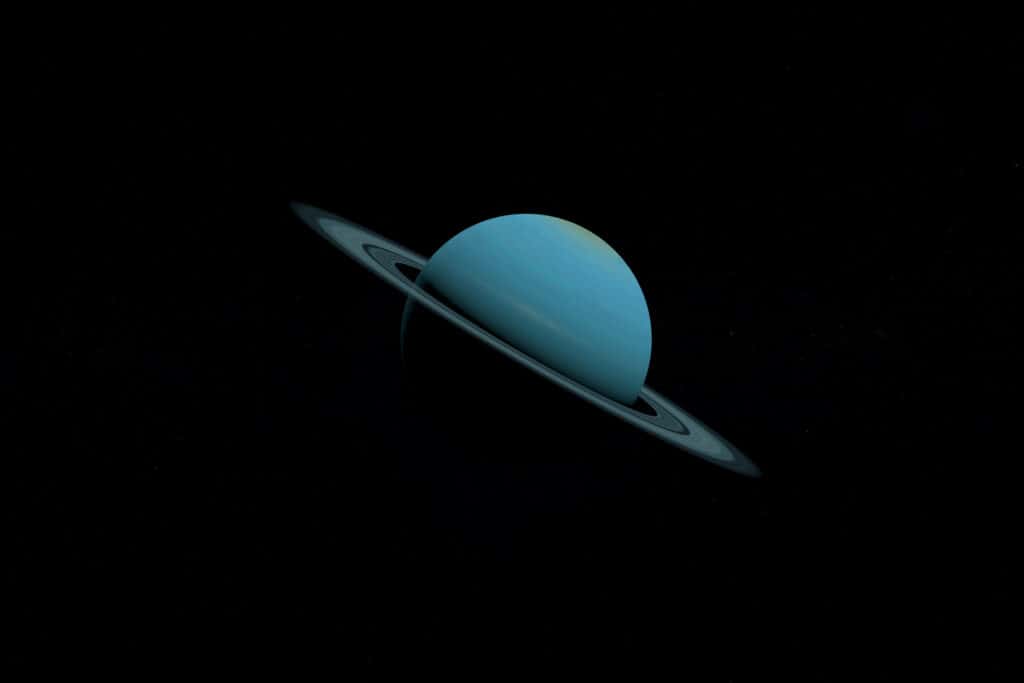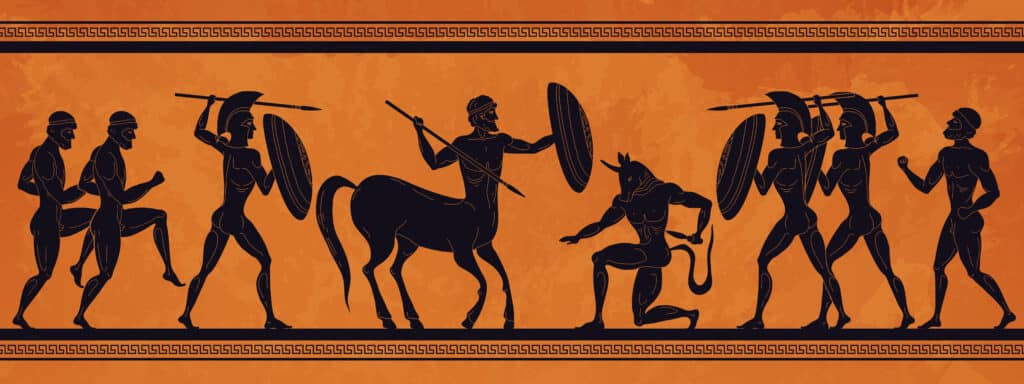Uranus is one of the most unusual planets in our solar system. It has a tilted axis, so its poles point east and west rather than north and south. This means each hemisphere of the planet gets 42 years of sunlight followed by 42 years of darkness! It has a thin system of 11 rings that were only discovered in 1977 by a space probe flyby. It has the coldest temperature of any of our planets, averaging -357 degrees Fahrenheit (-216 degrees Celsius). And it has a unique, gorgeous pale blue color. But what is Uranus made of? Does it have water? If so, maybe that is the explanation for its color. We’ll answer those questions and more about this weird, wonderful planet.

Uranus has 11 rings and 27 moons.
©iStock.com/Ianm35
Uranus: Background
The seventh planet in the solar system, Uranus is called one of the “giant planets” together with Jupiter, Saturn, and Neptune because of its immense size. It’s possible to see it with the naked eye, but just barely, as it has a magnitude of only 5.38-6.03. A magnitude of 6.5 is considered to be the very lowest that is visible to the human eye without a telescope or binoculars. Ancient astronomers thought it was just another star, but in 1781 William Herschel used a telescope to discover that it was actually a planet. It was named in honor of Ouranos, the ancient Greek god of the sky. Scientists today think that Uranus may have been impacted by a large asteroid or wandering planet early in its formation, which tilted it on its axis so that its poles point East and West rather than North and South.

The name of Uranus is derived from Greek mythology.
©SpicyTruffel/Shutterstock.com
Uranus: Vital Statistics
- The diameter of Uranus is 51,118 km (31,748.12 mi), which is 4 times wider than Earth. If Uranus were a softball, the Earth would be a nickel compared to it.
- The surface area of the planet is 8.1156 × 109 km2 (3.13355 x 109 mi2).
- Its mass is the smallest of the giant planets, at 8.681 × 10^25 kg (1.913839 × 1026 lbs.). This is 14.5 times more massive than Earth. This means it has much stronger gravity.
- It has a small rocky core about half the size of Earth, surrounded by the mantle: a partially frozen ocean. Above this is a thick atmosphere.

Astronomers think Uranus was hit by a very large asteroid billions of years ago, which resulted in the planet being tilted on its axis.
©Triff/Shutterstock.com
What is Uranus Made of?
The core of Uranus is thought to be made of iron, nickel, and silicate. The temperature at the core is about 9,000° Fahrenheit (4,982° Celsius), which sounds hot but is cooler than the core of other planets. And the planet as a whole is so cold, it radiates almost no heat into space as other planets do. The mantle of Uranus is a partially frozen ocean made of water, ammonia, and methane ice. But not all that methane ice is actually ice: chemical processes actually turn some of that methane into actual diamonds! The atmosphere of Uranus is made of hydrogen, helium, a little methane, and trace amounts of water and ammonia.
So, the answer is yes, Uranus does have water, but no the water is not the reason for the planet’s light blue color. That is the result of methane, which is much more plentiful in the planet’s chemical composition. On Earth, natural gas is made mainly of methane, so if you have a gas stove, the color of the flame is close to the color of Uranus.
More Questions
We’ve answered the questions we started with, but there are so many more we could ask. Why does Uranus have 27 moons, and what is each of them like? How did its ring system form, and why isn’t it as big as Saturn’s? Is there any way we could harvest methane, water, or even diamonds from this planet? We encourage you to continue learning about Uranus!
The photo featured at the top of this post is © iStock.com/IncrediVFX
Thank you for reading! Have some feedback for us? Contact the AZ Animals editorial team.






